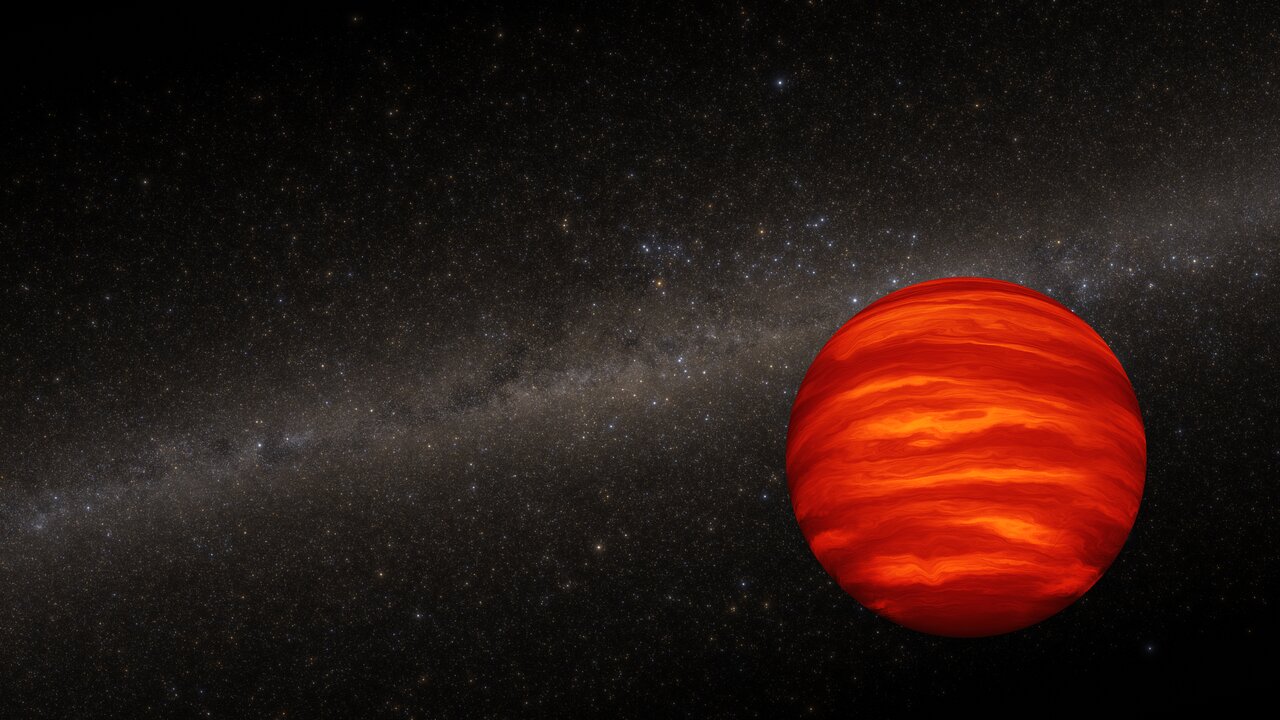
heic2405 — Science Release
21 March 2024
It takes two to tango, but in the case of brown dwarfs that were once paired as binary systems, that relationship doesn’t last for very long, according to a recent survey using the NASA/ESA Hubble Space Telescope.
Brown dwarfs are interstellar objects larger than Jupiter but smaller than the lowest-mass stars. Like stars, they collapse out of a cloud of gas and dust but do not have enough mass to sustain the fusion of hydrogen like a normal star.
Like stars, brown dwarfs can be born in pairs and orbit about each other. A Hubble Space Telescope survey has found that the older a brown dwarf is, the less likely it is to have a companion dwarf. This implies that a binary pair of dwarfs is so weakly linked by gravity that they drift apart over a few hundred million years as a result of the pull of bypassing stars. Call them the lonely hearts of the cosmos.
Hubble can detect binaries as close to each other as 480 million kilometres — the approximate separation between our Sun and the asteroid belt. But the astronomers who carried out the survey didn’t find any binary pairs in a sample of brown dwarfs in the solar neighbourhood. “Our survey confirms that widely separated companions are extremely rare among the lowest-mass and coldest isolated brown dwarfs, even though binary brown dwarfs are observed at younger ages. This suggests that such systems do not survive over time,” said lead author Clémence Fontanive of the Trottier Institute for Research on Exoplanets, Université de Montréal, Canada.
In a similar survey Fontanive conducted a couple of years ago, Hubble looked at extremely young brown dwarfs and some had binary companions, confirming that star-forming mechanisms do produce binary pairs among low-mass brown dwarfs. The lack of binary companions for older brown dwarfs suggests that some may have started out as binaries, but parted ways over time.
The new Hubble findings further support the theory that brown dwarfs are born the same way as stars, through the gravitational collapse of a cloud of molecular hydrogen. The difference is that they do not have enough mass to sustain nuclear fusion of hydrogen for generating energy, whereas stars do. More than half of the stars in our galaxy have a companion star that resulted from these formation processes, with more massive stars more commonly found in binary systems. “The motivation for the study was really to see how low in mass the trends seen among multiple star systems hold up,” said Fontanive.
“Our Hubble survey offers direct evidence that these binaries that we observe when they’re young are unlikely to survive to old ages, they’re likely going to get disrupted. When they’re young, they’re part of a molecular cloud, and then as they age the cloud disperses. As that happens, things start moving around and stars pass by each other. Because brown dwarfs are so light, the gravitational hold tying wide binary pairs is very weak, and bypassing stars can easily tear these binaries apart,” said Fontanive.
The team selected a sample of brown dwarfs previously identified by NASA’s Wide-Field Infrared Survey Explorer. It sampled some of the coldest and lowest-mass old brown dwarfs in the solar neighbourhood. These old brown dwarfs are so cool (a few hundred degrees warmer than Jupiter in most cases) that their atmospheres contain water vapour that condensed out.
To find the coolest companions, the team used two different near-infrared filters, one in which cold brown dwarfs are bright, and another covering specific wavelengths where they appear very faint as a result of water absorption in their atmospheres.
“Most stars have friends – whether that is a binary companion or exoplanets,” added team member Beth Biller of the University of Edinburgh in the United Kingdom. “This survey really demonstrates that the same is not true for brown dwarfs. After a brief period early in their lifespans, most brown dwarfs remain single for the rest of their very long existence.”
“This is the best observational evidence to date that brown dwarf pairs drift apart over time,” said Fontanive. “We could not have done this kind of survey and confirmed earlier models without Hubble’s sharp vision and sensitivity.”
More information
The Hubble Space Telescope is a project of international cooperation between ESA and NASA.
Image credit: NASA, ESA, J. Olmsted (STScI)
Links
Contacts
Bethany Downer
ESA/Hubble Chief Science Communications Officer
Email: Bethany.Downer@esahubble.org

